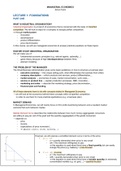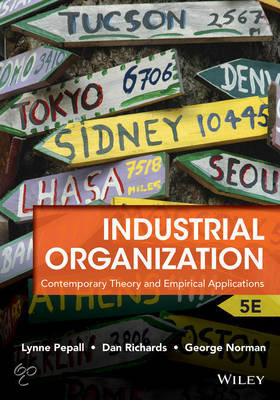Samenvatting
Managerial Economics Samenvatting - Handelsingenieur & TEW - 16/20 eerste zit
- Instelling
- Katholieke Universiteit Leuven (KU Leuven)
Deze samenvatting omvat alle leerstof uit de lessen Managerial Economics, gegeven aan de tweedejaars studenten Handelsingenieur en Toegepaste Economische Wetenschappen (TEW) door Mattia Nardotto en Christophe Crombez. Ik scoorde met deze samenvatting een 16/20 in mijn eerste zit. Deze samenvatting ...
[Meer zien]




